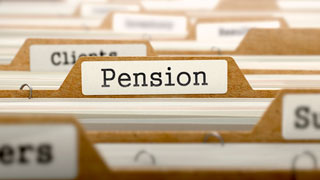
LIRAs are registered accounts that are funded with assets from a pension plan. These types of accounts are very similar to the RRSP but with some significant restrictions.
Recently I was quoted in an article written by Jon Chevreau for the National Post. about LIRAs. As I am finding that more and more of my clients are holding LIRAs, I thought this would be a good opportunity to explain what they are and how they work.
Before I get into the details of the account itself, I think it would be useful to gain some understanding of why these accounts are becoming so prevalent in today’s workforce. The world of pensions and employees has changed significantly in the past 10 years or so. It used to be that there were many more employers in the private sector that offered their employees defined benefit (DB) pension plans. These days, to find a private sector employer with a DB pension plan is increasingly rare. If a company does offer a pension today, it is more likely to be a defined contribution (DC) pension plan.
In addition to there being less DB pension plans, employees are less likely to remain at their current employer their entire careers than they were in the past. If these employees leave and have a pension, the balance of the DC pension plan or as an option, the commuted value of the DB pension plan, will be transferred out to a LIRA.
Finally, those who did decide to commute (or take the cash value) of their DB pension mention reasons for their decision like wanting control over the investment strategy and having more flexibility over the withdrawals in retirement versus the traditional pension payout. This is due to changing attitudes about investing and personal finance.
What is a LIRA and how does it work?
As I mentioned above it works almost exactly like an RRSP but with additional restrictions. The first of these is you cannot access the funds in the account except under very specific circumstances I will discuss below. As these funds are from a pension plan, the government wants to ensure that they are used for retirement. Contributions are also restricted, as the LIRA can only be funded with pension assets.
Once you have made the decision to transfer your assets out of the pension plan, you would open a LIRA at your financial institution and transfer the assets there using form T2151. If you already have an existing LIRA you can combine them if they are under the same pension jurisdiction. After the transfer is complete, you can invest these assets in the same manner that you would invest your RRSP assets.
How can I get the money out of a LIRA?
Even when you reach the point where you are ready to retire and draw on your LIRA, your ability to draw on these assets are still limited. First they can be converted into an annuity, where a future stream of payments are made based on the value of the LIRA and other factors such as estimated mortality.
If you choose not to go the route of the annuity, then your LIRA will be transferred into a Life Income Fund (LIF) no later than the year in which you turn 71, much like the RRSP becomes a RRIF. As with the RRIF, each year you will be required to take a minimum payment from your LIF. Where it differs is the LIF also has a maximum payment each year which cannot be exceeded.
With the increase in the amount of LIRAs the government has made a major change to increase the flexibility for those who rely on these accounts for their retirement income. They now allow for a one-time unlocking of up to 50% of your LIRA into another tax-deferred vehicle, such as an RRSP or a RRIF, once you have reached the calendar year in which you turn 55. With half of the balance unlocked, this portion will no longer be subject to the maximum withdrawal limits allowing greater financial flexibility for Canadians. This provision is now also available in some provinces. Check with your province if your LIRA is provincially regulated.
Are there ways to unlock the account before retirement?
There are situations under which a LIRA may be unlocked. Again I am going to go over the federal rules. These may vary by province.
If you are 55 or older and have only a small balance in the LIRA, you may unlock it. A small balance is defined as less than 50% of the current Year’s Maximum Pensionable Earnings (YMPE), $27,450 for 2016. If the balance in the LIRA is less than this figure, it may be unlocked and moved to an RRSP.
Next is becoming a non-resident. If you are a non-resident of Canada for two consecutive years, you can unlock your LIRA.
Third is for health reasons. If you have been diagnosed and certified by a doctor to have a shortened life span, you may unlock your LIRA.
If you are experiencing financial hardship you may unlock up to 50% of the current YMPE. To reach the maximum you must have no income. If you have some income, but it is still low, there is a formula to calculate how much you can unlock. Once your income reaches 75% of the current YMPE, the amount you may unlock reaches zero.
As the LIRA becomes more commonplace, understanding how it works will be more common knowledge like how the RRSP works. Until that time you may have questions about it. If you do, please send me a note at matt@tridelta.ca or give me a call at (416) 733-3292 X230 and I would be happy to discuss your situation with you.

